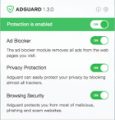What is UpgradeActivity
UpgradeActivity is a malicious application that belongs to the Adware category. Adware is not as dangerous as like a computer virus or Ransomware, but its presence can bring constant popups and/or unwanted advertising. Actually creators of adware software is associated with some third-party ad networks and by displaying adverts to users they earn money for yourself. These adverts not only bother your browsing experience but also redirect you to malicious web-pages.
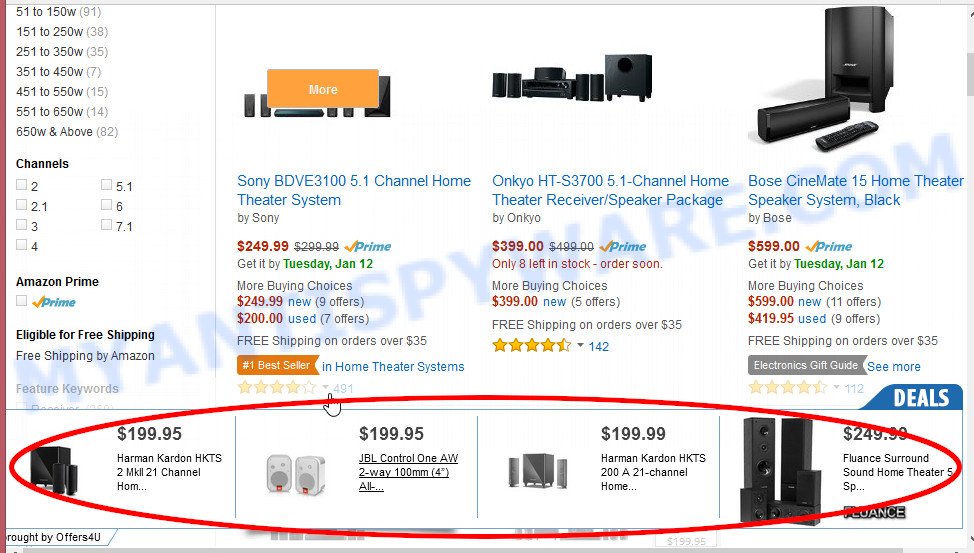
Unwanted ads
Does adware steal your confidential information? Adware software may monetize its functionality by collecting privacy info from your browsing sessions. This privacy information, later, can be easily transferred third party companies. This puts your confidential information at a security risk.
Thus, the adware is quite dangerous. So, we suggest you delete it from your MAC OS without a wait. Follow the guidance presented below to remove UpgradeActivity from your computer and Safari, Chrome and Firefox.
How does UpgradeActivity get on your machine
Adware usually gets onto MAC computers by being attached to some freeware that users download off of the Internet. So, think back, have you ever download and run any free apps. In order to avoid infection, in the Setup wizard, you should be be proactive and carefully read the ‘Terms of use’, the ‘license agreement’ and other installation screens, as well as to always select the ‘Manual’ or ‘Advanced’ setup option, when installing anything downloaded from the Internet.
Threat Summary
| Name | UpgradeActivity |
| Type | adware, PUP (potentially unwanted program), Mac malware, Mac virus |
| Detection Names | Adware.MAC.Generic, MacOS.Agent-MT, Osx.Adware.Cimpli, Adware/Adload!OSX, OSX.Trojan.Gen, Program:MacOS/Vigram.A, Trojan-Downloader.OSX.Adload and ApplicUnwnt |
| Distribution | Free software installers, suspicious pop-up advertisements, torrent downloads and fake software updaters |
| Symptoms | You keep getting redirected to unfamiliar web sites, advertising pop-ups won’t go away, your MAC OS starts automatically installing unwanted apps, unexpected web-browser extensions or toolbars keep coming back, your browser startpage has replaced without your permission, your web browser slows to a crawl. |
| Removal | UpgradeActivity removal guide |
How to remove UpgradeActivity from Mac computer
The answer is right here on this web-page. We have put together simplicity and efficiency. It will allow you easily to free your MAC of UpgradeActivity . Moreover, you can choose manual or automatic removal method. If you’re familiar with the MAC then use manual removal, otherwise use the free anti-malware tool designed specifically to get rid of adware. Of course, you can combine both methods. Some of the steps will require you to restart your MAC OS or close this webpage. So, read this guide carefully, then bookmark this page or open it on your smartphone for later reference.
To remove UpgradeActivity, execute the following steps:
- Remove unwanted profiles on Mac device
- Delete UpgradeActivity associated software by using the Finder
- Remove UpgradeActivity related files and folders
- Scan your Mac with MalwareBytes
- Remove UpgradeActivity from Safari, Chrome, Firefox
- How to stay safe online
Remove unwanted profiles on Mac device
UpgradeActivity can install a configuration profile on the Mac system to block changes made to the browser settings. Therefore, you need to open system preferences, find and delete the profile installed by the adware.
Click the System Preferences icon ( ![]() ) in the Dock, or choose Apple menu (
) in the Dock, or choose Apple menu ( ![]() ) > System Preferences.
) > System Preferences.
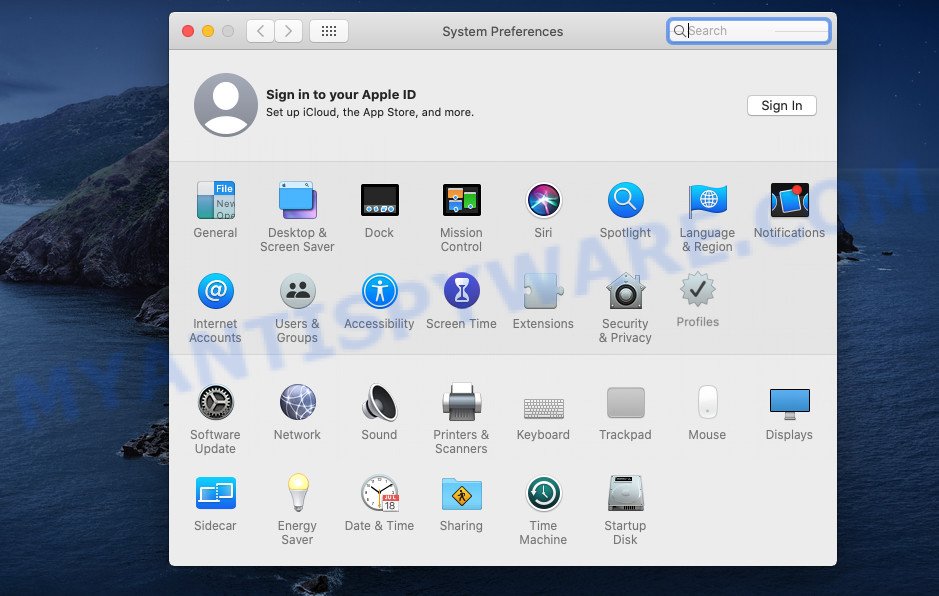
In System Preferences, click Profiles, then select a profile related to UpgradeActivity.
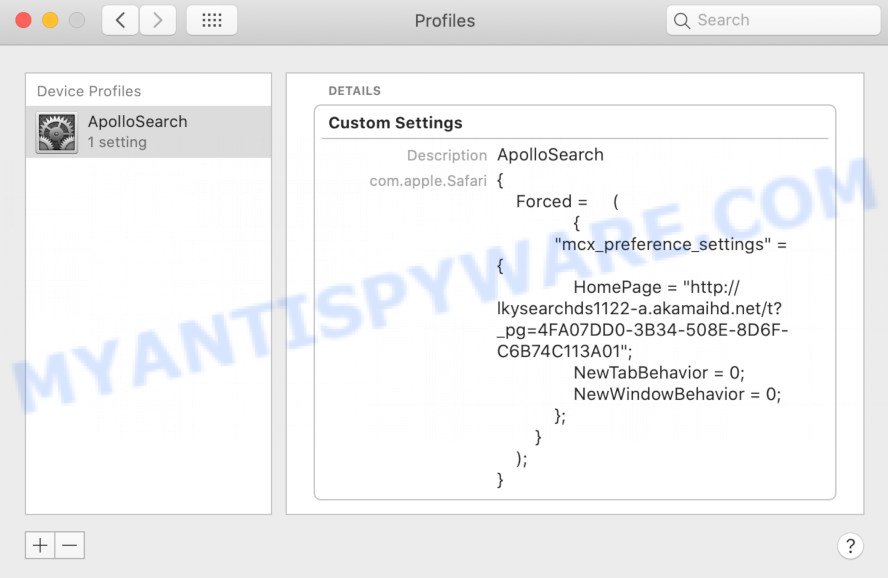
Click the minus button ( – ) located at the bottom-left of the Profiles screen to remove the profile.
Note: if you do not see Profiles in the System Preferences, that means there are no profiles installed on your Mac device, which is normal.
Delete UpgradeActivity associated software by using the Finder
Some of browser hijackers, adware and PUPs can be removed using the Move to Trash utility which is located in the Finder. So, if you are running any version of Apple Mac and you have noticed an unwanted program, then first try to remove it through the Finder.
Open Finder and click “Applications” as shown in the following example.
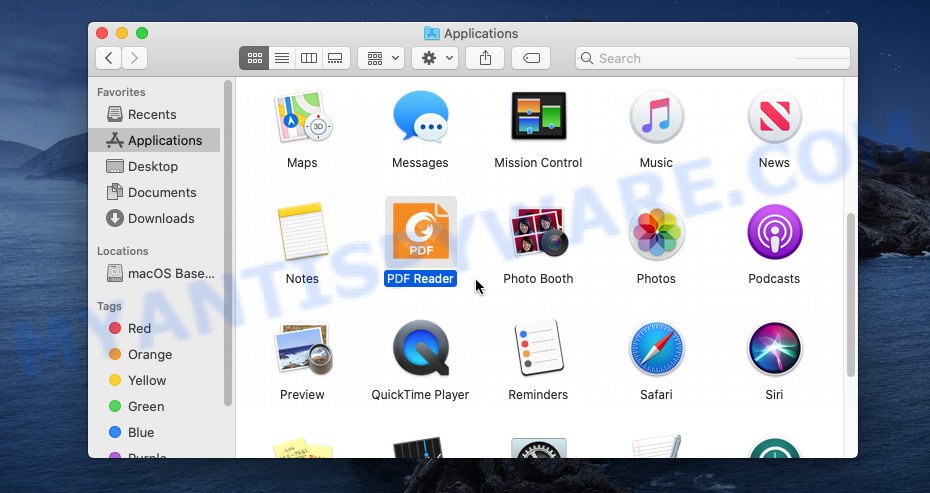
You will see a list of software installed on your MAC system. We recommend to pay maximum attention to the program you installed last. Most likely, it is the UpgradeActivity . If you’re in doubt, you can always check the application by doing a search for her name in Google, Yahoo or Bing.
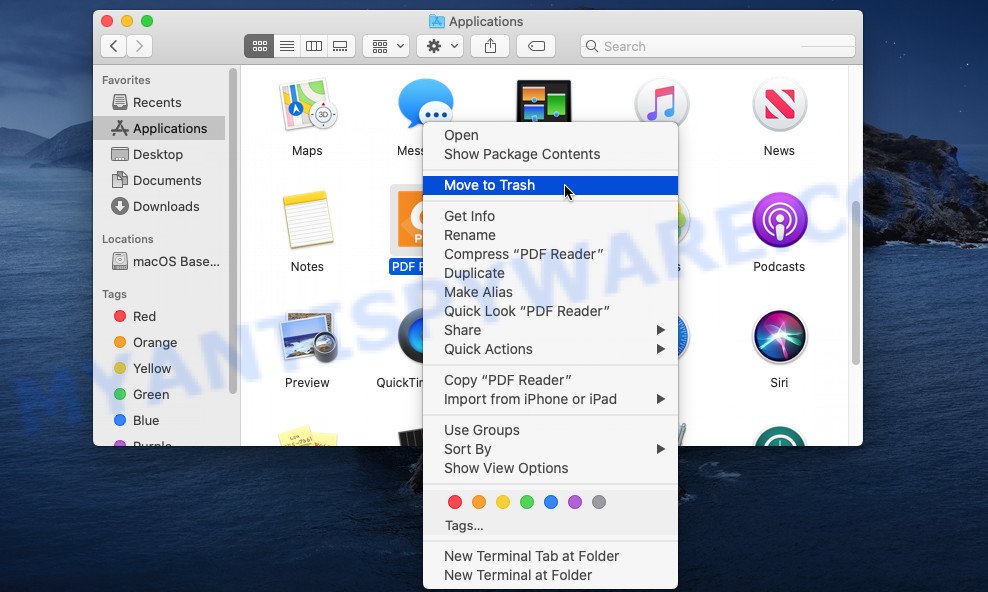
When the program which you need to delete is found, simply right click on its name, and choose “Move to Trash”.
Don’t forget, select Finder, then “Empty Trash”.
Remove UpgradeActivity related files and folders
Now you need to try to find UpgradeActivity related files and folders, and then delete them manually. You need to look for these files in certain directories. To quickly open them, we recommend using the “Go to Folder…” command.
UpgradeActivity creates several files, these files must be found and removed. Below is a list of files associated with this unwanted program.
- /Library/LaunchDaemons/com.UpgradeActivity.system.plist
- ~/Library/LaunchAgents/com.UpgradeActivity.service.plist
- /Library/Application Support/.(RANDOM)/System/com.UpgradeActivity.system
- ~/Library/Application Support/.(RANDOM)/Services/com.UpgradeActivity.service.app
Some files created by UpgradeActivity are hidden from the user. To find and delete them, you need to enable “show hidden files”. To do this, use the shortcut CMD + SHIFT + . Press once to show hidden files and again to hide them. There is another way. Click Finder -> Applications -> Utilities -> Terminal. In Terminal, paste the following text: defaults write com.apple.finder AppleShowAllFiles YES

Press Enter. Hold the ‘Option/alt’ key, then right click on the Finder icon in the dock and click Relaunch.
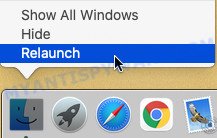
Click on the Finder icon. From the menu bar, select Go and click “Go to Folder…”. As a result, a small window opens that allows you to quickly open a specific directory.

Check for UpgradeActivity generated files in the /Library/LaunchAgents folder

In the “Go to Folder…” window, type the following text and press Go:
/Library/LaunchAgents
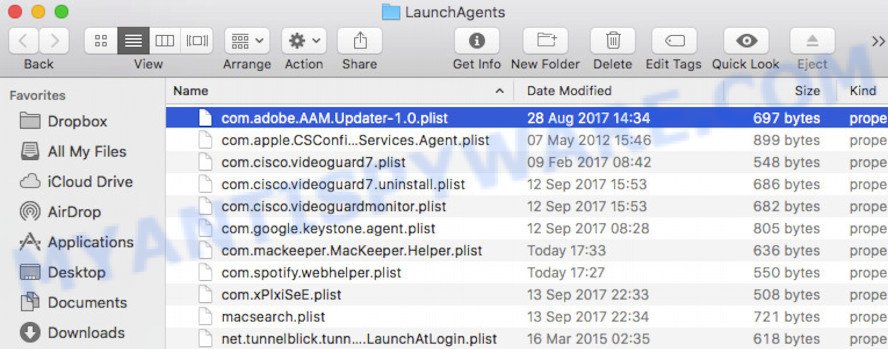
This will open the contents of the “/Library/LaunchAgents” folder. Look carefully at it and pay special attention to recently created files, as well as files that have a suspicious name. Move all suspicious files to the Trash. A few examples of files: macsearch.plist, installapp.plist, com.net-preferences.plist, search.plist, com.google.defaultsearch.plist, , com.machelper.plist and com.UpgradeActivity.service.plist. Most often, PUPs, adware and browser hijackers create several files with similar names.
Check for UpgradeActivity generated files in the /Library/Application Support folder

In the “Go to Folder…” window, type the following text and press Go:
/Library/Application Support
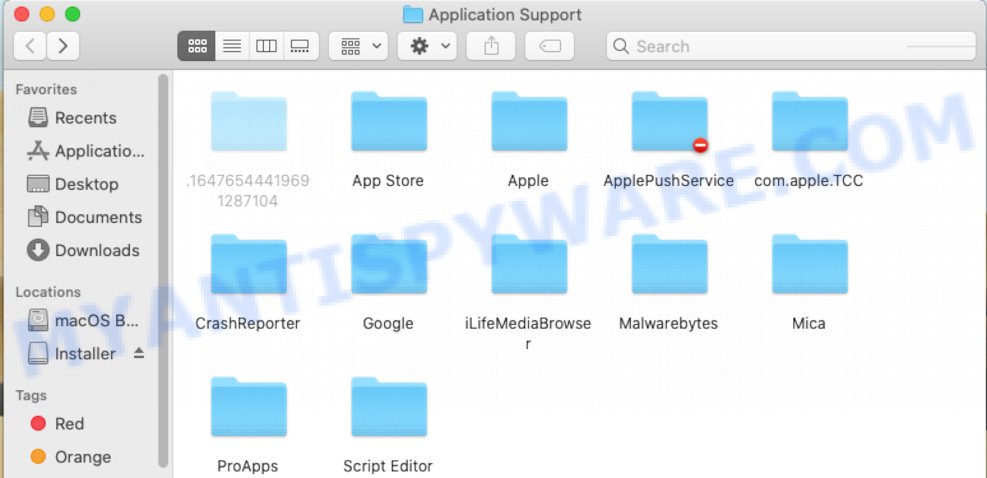
This will open the contents of the “Application Support” folder. Look carefully at its contents, pay special attention to recently added/changed folders and files. Check the contents of suspicious folders, if there is a file with a name similar to com.UpgradeActivity.system, then this folder must be deleted. Move all suspicious folders and files to the Trash.
Check for UpgradeActivity generated files in the “~/Library/LaunchAgents” folder

In the “Go to Folder…” window, type the following text and press Go:
~/Library/LaunchAgents

Proceed in the same way as with the “/Library/LaunchAgents” and “/Library/Application Support” folders. Look for suspicious and recently added files. Move all suspicious files to the Trash.
Check for UpgradeActivity generated files in the /Library/LaunchDaemons folder
In the “Go to Folder…” window, type the following text and press Go:
/Library/LaunchDaemons

Carefully browse the entire list of files and pay special attention to recently created files, as well as files that have a suspicious name. Move all suspicious files to the Trash. A few examples of files to be deleted: com.installapp.system.plist, com.machelper.system.plist, com.search.system.plist, com.UpgradeActivity.system.plist and com.macsearch.system.plist. In most cases, adware, browser hijackers and potentially unwanted programs create several files with similar names.
Scan your Mac with MalwareBytes
Manual UpgradeActivity removal requires some computer skills. Some files and system entries that created by the adware software may be not fully removed. We recommend that use MalwareBytes Free to scan the Mac computer. Moreover, this application will help you to get rid of adware, browser hijackers, toolbars and potentially unwanted programs that your MAC OS can be affected too.
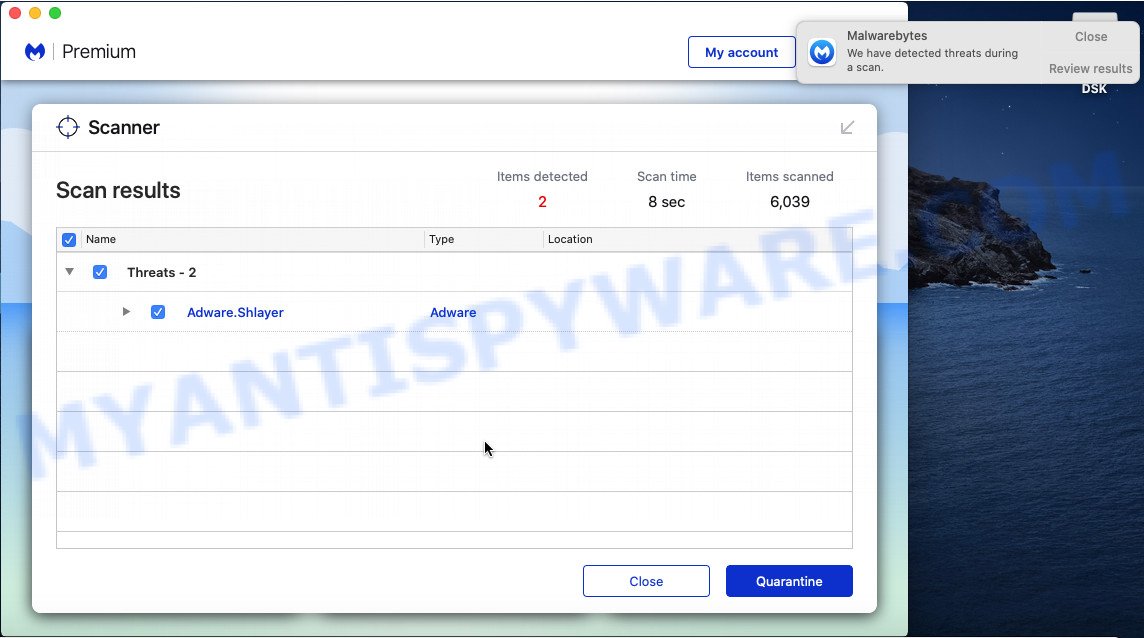
- Installing the MalwareBytes Free is simple. First you will need to download MalwareBytes Anti-Malware by clicking on the link below. Save it directly to your MS Windows Desktop.
Malwarebytes Anti-malware (Mac)
21022 downloads
Author: Malwarebytes
Category: Security tools
Update: September 10, 2020
- Once the download is complete, please close all applications and open windows on your Apple Mac. Run the downloaded file. Follow the prompts.
- The MalwareBytes Anti-Malware (MBAM) will start and open the main window.
- Further, click the “Scan” button . MalwareBytes program will scan through the whole machine for the UpgradeActivity adware. A system scan can take anywhere from 5 to 30 minutes, depending on your computer. When a threat is detected, the number of the security threats will change accordingly. Wait until the the scanning is finished.
- Once MalwareBytes has finished scanning your MAC system, the results are displayed in the scan report.
- Make sure all threats have ‘checkmark’ and click the “Remove Selected Items” button.
- Close the Anti-Malware and continue with the next step.
Remove UpgradeActivity from Safari, Chrome, Firefox
If you’re still getting UpgradeActivity adware, then you can try to delete it by deleting harmful extensions.
You can also try to remove UpgradeActivity adware by reset Chrome settings. |
If you are still experiencing issues with UpgradeActivity adware software removal, you need to reset Mozilla Firefox browser. |
|
How to stay safe online
One of the worst things is the fact that you cannot block all harmful webpages using only built-in Microsoft Windows capabilities. However, there is a application out that you can use to stop unwanted web browser redirects, ads and pop ups in any modern web-browsers including Chrome, Safari and Firefox. It is called Adguard and it works very well.
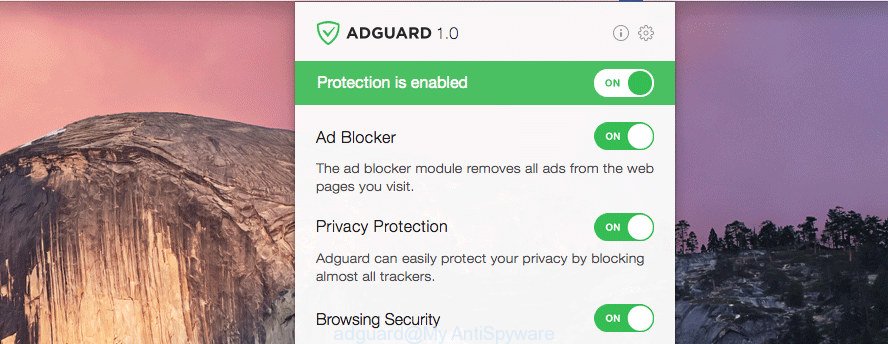
Click the link below to download AdGuard.
3782 downloads
Author: © Adguard
Category: Security tools
Update: January 17, 2018
Once the downloading process is done, run the downloaded file. You will see the “Setup Wizard” screen. Follow the prompts.
Each time, when you launch your MAC system, AdGuard will start automatically and stop unwanted pop-ups, block malicious and misleading web sites.
To sum up
Once you have finished the step-by-step guide above, your MAC system should be clean from this adware and other malicious software. The Mozilla Firefox, Safari and Google Chrome will no longer show any unwanted ads when you surf the Net. Unfortunately, if the instructions does not help you, then you have caught a new adware, and then the best way – ask for help.
Please create a new question by using the “Ask Question” button in the Questions and Answers. Try to give us some details about your problems, so we can try to help you more accurately. Wait for one of our trained “Security Team” or Site Administrator to provide you with knowledgeable assistance tailored to your problem with the annoying UpgradeActivity .

